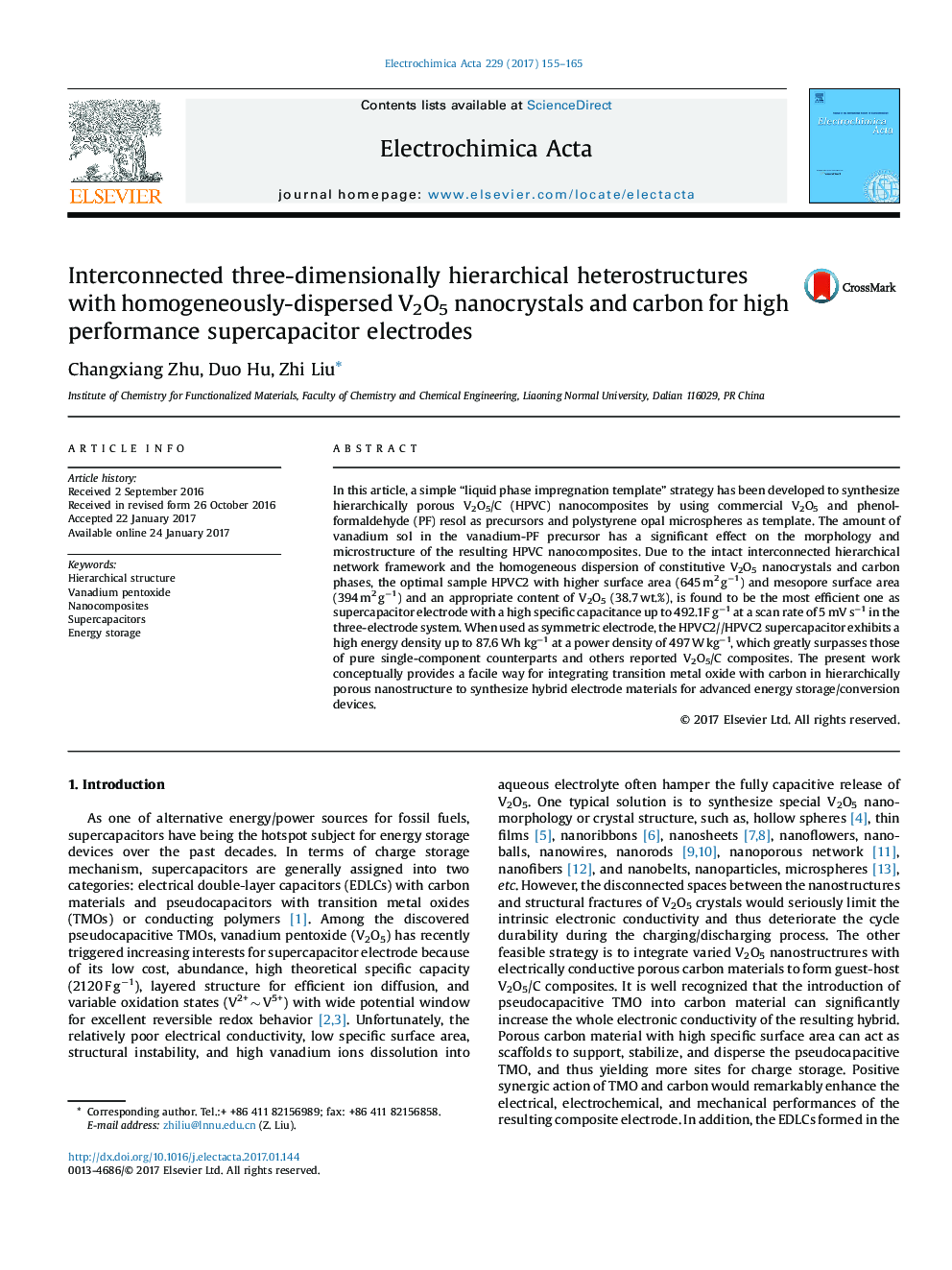| Article ID | Journal | Published Year | Pages | File Type |
|---|---|---|---|---|
| 4767298 | Electrochimica Acta | 2017 | 11 Pages |
Abstract
In this article, a simple “liquid phase impregnation template” strategy has been developed to synthesize hierarchically porous V2O5/C (HPVC) nanocomposites by using commercial V2O5 and phenol-formaldehyde (PF) resol as precursors and polystyrene opal microspheres as template. The amount of vanadium sol in the vanadium-PF precursor has a significant effect on the morphology and microstructure of the resulting HPVC nanocomposites. Due to the intact interconnected hierarchical network framework and the homogeneous dispersion of constitutive V2O5 nanocrystals and carbon phases, the optimal sample HPVC2 with higher surface area (645Â m2Â gâ1) and mesopore surface area (394Â m2Â gâ1) and an appropriate content of V2O5 (38.7Â wt.%), is found to be the most efficient one as supercapacitor electrode with a high specific capacitance up to 492.1F gâ1 at a scan rate of 5Â mVÂ sâ1 in the three-electrode system. When used as symmetric electrode, the HPVC2//HPVC2 supercapacitor exhibits a high energy density up to 87.6 Wh kgâ1 at a power density of 497Â WÂ kgâ1, which greatly surpasses those of pure single-component counterparts and others reported V2O5/C composites. The present work conceptually provides a facile way for integrating transition metal oxide with carbon in hierarchically porous nanostructure to synthesize hybrid electrode materials for advanced energy storage/conversion devices.
Related Topics
Physical Sciences and Engineering
Chemical Engineering
Chemical Engineering (General)
Authors
Changxiang Zhu, Duo Hu, Zhi Liu,
